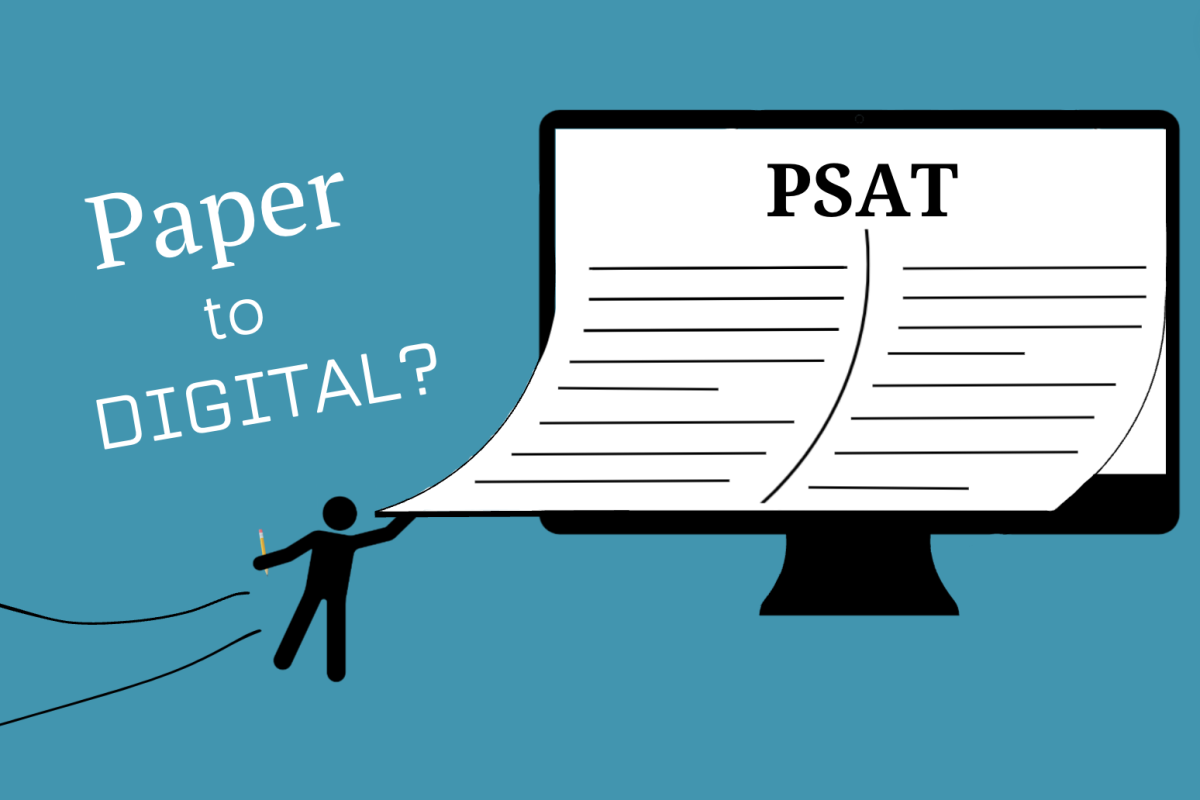Over the past year, College Board exams have been going digital, and the PSAT has been no different. This year marks the first year Edison High took the PSAT digitally. With the SAT being digital from Spring 2024 onwards, this PSAT is a type of test run for students to transition, but such a shift has come with mixed opinions.
For juniors that took both paper and digital PSATs, the transition brought some concerns, which later became praises.
“Paper annotations helped me remember important aspects of the reading section last year, so I was worried not having that on the digital PSAT would make some questions difficult,” said Riya Patel ‘25. “However, with the same tools provided on the digital test, it ended up not mattering as much and made me comfortable in a digital setting.”
From a proctoring perspective, a digital PSAT meant less staff involvement in management of the exam.
“I am no longer responsible for tracking testing breaks for students once the program begins,” said Ms. Michelle Curcio, an English teacher at EHS and proctor of this year’s digital PSAT. The automation of the digital PSAT makes it easier for her and other proctors of the test to manage the exam and focus on helping any students with technological issues, a new problem of the digital PSAT.
Additionally, a digital PSAT meant less chances for any forms of cheating. The test varied questions for each student in an attempt to get scores based purely on students’ capabilities.
With a digital exam, technological issues are customary; however, at EHS, a majority of students had an easy time entering and completing the digital PSAT.
“Aside from one person in my testing room that had wifi issues at the beginning of the test, I haven’t heard about anyone having any other tech issues, which was relieving to hear,” said Patel. Even in the cases of students with technical difficulties, proctors and technicians were present to aid in fixing any issues and allow students to comfortably complete their test.
Conversely, one point of criticism was the inability to submit a section early during the exam.
“At one point, I was waiting for ten to twenty minutes for the timer to run out after I finished and checked my answers,” said Yongqi Wu ‘26. “I just had to sit there mindlessly and wait for the timer to end but, right after that, I had my ten minute break. It felt like those thirty minutes were wasted when I could have moved on to another section and completed the test early.”
Generally, after experiencing the test, the transition of the PSAT from a paper format to a digital platform has been looked on favorably by a large portion of the student population.
For instance, Aprant Sahoo ‘26 preferred a digital PSAT. The digital PSAT, in comparison to the old paper PSAT, was “shorter in time and length,” alleviating the mental stress put on him during the test. He also approved of the format of the reading questions on the digital PSAT, which provides test takers with short excerpts differing from question to question. Sahoo believes that this format is easier than the traditional English questions on the paper PSAT, which require students to read and analyze longer passages.
As the College Board continues to push more up-to-date formats, flexibility will remain a constant on the part of the 2023 student.



















































































